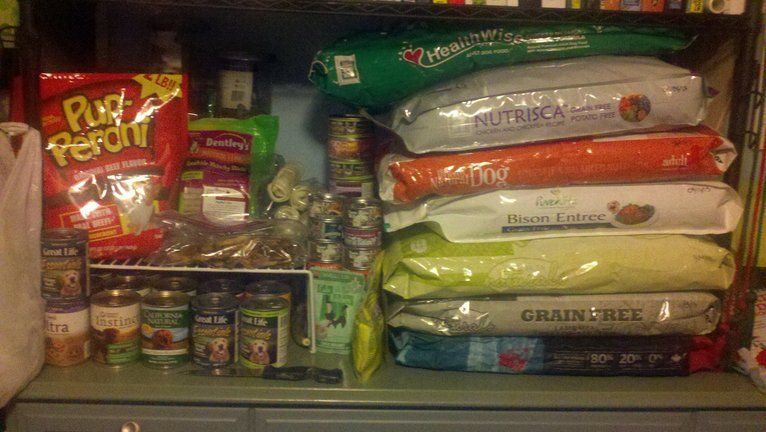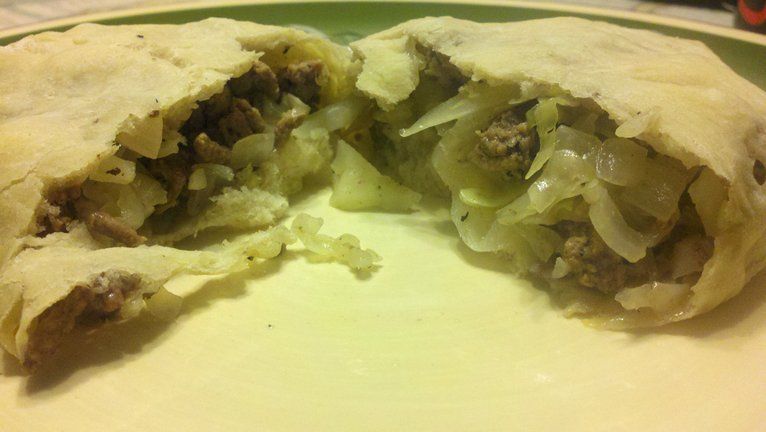Tuesday, August 28, 2012
Hiatus
I'm currently pinned down in Mississippi. I lost a family member and am here for the funeral, but of course Hurricane Isaac is bearing down on us. Internet was already scarce, but now it's basically non-existent. Plus, the power may go out at any moment. I'll return to blogging whenever I management to get home.
Saturday, August 25, 2012
Unusual Breed: Kooikerhondje
 |
| This small breed is also known by such names as the Dutch decoy dog. |
 |
| A typical Kooiker face |
These dogs are rather small, measuring fifteen to sixteen inches tall. Their feathered coat is reminiscent of certain spaniels. The breed only comes in one color variation: red piebald with black hairs on the ears. The preferred facial markings are also clearly defined: a white stripe down the face with prominent red on the cheeks.
Though once a prominent working breed, the Kooiker is now primarily a companion.
Sources are the American Kennel Club, Fédération Cynologique Internationale, and Kooikerhondje Club of the USA. Images are from Wikimedia Commons under Creative Commons licenses: one, two.
Wednesday, August 22, 2012
Pilobolus
 |
| Pilobolus is also known as the shotgun fungus due to its interesting reproductive habits |
Pilobolus is a personal favorite fungus of mine, due to how interesting its life cycle is. This fungus grows on the dung of herbivorous animals. However, that's not the interesting part. It begins with the fact that the spores don't land on the dung after it's deposited: they're there before it ever touches the ground. How does it get there? The animal eats grass that has already been contaminated by the spores. This way, the spores reach the dung when it's still incredibly fresh.
One of the major difficulties in this, though, is that animals generally won't eat vegetation that is close to where dung has been deposited, something called the "zone of repugnance." This makes sense for the animal, and creates a problem for the fungus. So, how does it get past this problem? Pilobolus actually shoots its spores through the air to try and reach fresh grass. The sporangium (or bunch of spores) develops on top of a high-pressure, liquid filled section. When the spores are mature, this section burst and the sporangium is shot away. Considering how small these structures, it's remarkable that the sporangium can go as far as two meters.
Below is some brilliant footage of this fungus in action:
Interestingly enough, certain nematode worms that are internal parasites to the same herbivores will often hitch a ride on the sporangium. This can actually be seen in the video above. Look for small white thread-looking things during the closeups of the fungus. Those are the worms.
Sources are Utah State University, University of Wisconsin, Cornell University, and the BBC. Image is from Flickr.com under a Creative Commons license.
Monday, August 20, 2012
Interesting Animals: Ladybird Spider
.JPG) |
| Only the males of the Eresus sandaliatus species are so brightly colored |
Ladybird spiders like to live in sheltered areas, creating burrows that they line with silk. Silk is also radiated out from the burrow to act as a sort of tripwire. If prey touches the silk, it signals the spider to attack. They feed on various species, including some sizable species of beetle. Females don't leave their burrows much, so as you can imagine this could make life somewhat difficult for the males. When out searching for a female, they have to pluck at the females' silk threads to let her know they aren't prey and avoid being eaten.
The species is European and their numbers aren't great, to the point of them being Endangered in the United Kingdom. Times were tough in the 1990's when it was believed only fifty of these spiders were left in Britain. Captive breeding and other conservation actions have done a lot, and now there are around six hundred wild spiders.
Source is ARKive. Image is from Wikimedia Commons under a Creative Commons license.
Saturday, August 18, 2012
Guess the Genotype #86
Can you guess this dog's genotype? Its breed?
 |
| Image is from Flickr.com under a Creative Commons license |
Thursday, August 16, 2012
Dog Food Review: Go! Natural
This is the ninth of the dog food review series I'm doing. This is another food whose formula is changing, so I was able to snag two small bags for half price. This was originally going to be a short review, but I was able to snag the second bag, which was hiding away in a corner.
Go! Natural Grain Free Protein-Rich Endurance Formula
Dog Food Advisor rating: ★★★★★? (listing is for the new formula)
This food is AAFCO approved for all life stages.
Ingredients: Turkey meal, chicken meal, de-boned chicken, potato, chicken fat
(preserved with mixed tocopherols, a source of vitamin E), whole dried
egg, salmon meal, apple, peas, natural flavour, tomato pomace, duck
meal, salmon oil, flax seed oil, yeast extract, potassium chloride,
taurine, choline chloride, pumpkin, carrots, bananas, blueberries,
cranberries, lentil beans, broccoli, spinach, cottage cheese, alfalfa
sprouts, chicory extract, Lactobacillus acidophilus, Lactobacillus
casei, Enterococcus faecium, Bifidobacterium thermophilum, dried
Aspergillus niger fermentation extract, dried Aspergillus oryzae
fermentation extract, vitamins (vitamin E supplement,
L-ascorbyl-2-polyphosphate (source of vitamin C), niacin, inositol,
vitamin A supplement, thiamine mononitrate, d-calcium pantothenate,
pyridoxine hydrochloride, riboflavin, beta-carotene, vitamin D3
supplement, folic acid, biotin, vitamin B12 supplement), minerals (zinc
proteinate, copper sulfate, copper proteinate, manganese proteinate,
manganous oxide, calcium iodate, sodium selenite), yucca schidigera
extract, dried rosemary.
Items in italics will be discussed later.
Bag's recommended daily feeding for an active dog 70 lbs: 3 cups, 90 lbs: 3 1/4 cups
Crude Protein: minimum of 34.0%
Crude Fat: minimum of 16.0%
Crude Fiber: maximum of 4.0%
Moisture: maximum of 10.0%
Calorie content: 470 kcal/cup, 4,160 kcal/kg
Calculated amount to maintain Ebon's ideal weight (82.5 lbs): 3.55 cups or 0.40 kg (0.88 lbs)
Price per pound when buying the largest bag: Unable to do calculations as all sellers I could find were out of stock
Estimated cost of feeding Ebon per year on this food: Unable to calculate for same reasons
Ebon receives slightly less than the calculated feeding amount to allow for his daily treats
Ebon's overall health on this food: Very good. Shiny coat, poop consistent and compact, energy level moderate to high
I
started transitioning to this food on July 28, and I am currently transitioning him off of it. The kibble itself is
nice and dark and roundish with a pleasently meaty smell. The smell is typically for a food
with its sort of formula: a moderately meaty smell. The meat content of
this food is significant, considering the fact that the first three
ingredients are meats, and two are the more nutritionally dense meat meals. Some nice things to see in this food: chelated
minerals and probiotics. Chelated minerals are believed to be more
easily absorbed and used by the body than non-chelated minerals, and
probiotics/microorganisms help maintain good gut flora to provide for
better digestion.
Ebon did great in this food, especially after he got over the stress caused by Siggy's morning "I need to potty and eat" whining barks. He was pretty typical Ebon, happy and rather energetic. His coat was fine, especially after I gave him a much-needed bath. He's wonderfully soft right now, with his fur being beautifully shiny and soft and silky to the touch. He did experience some stress while on this food, and did indeed do his normal stress poops. They were less lose than on other foods, but it still happened, which seems to be how he is on any food with a protein content over thirty. He did develop some tartar while on this food, but it's on the side with his missing tooth, which he doesn't like use to chew his duck feet or other treats that will help keep his teeth clean. So, that just means I need to brush them more often.
I also love that the label is in seven languages, but it also made it very hard to read!
It's a bit of a shame that the formula is being discontinued, partly due to the fact that the new version includes some ingredients I am unsure about after Ebon's unfortunate reaction to one of the foods in my trials. At this point, I rather doubt I'll try the new formula due to this fact. And Ebon did so well on the old stuff, too
Ebon's still a little chunky, but has lost at least a pound or two since Siggy left and I put him on a minor diet. I like him lean because it's better for his joints, so I want him back to the way he was before he started stealing food from the other animals. I don't weigh him regularly, but do the "look and feel" weight assessment regularly. When he's at the weight the veterinarian wants me ti keep him at (the 82.5 pounds mentioned above) you can faintly see a rib or two, and right now they're padded with fat. If it would stop raining so heavily I will also be increasing his exercise.
Will I change foods? We'll see. Next up: California Natural.
Go! Natural Grain Free Protein-Rich Endurance Formula
Dog Food Advisor rating: ★★★★★? (listing is for the new formula)
This food is AAFCO approved for all life stages.
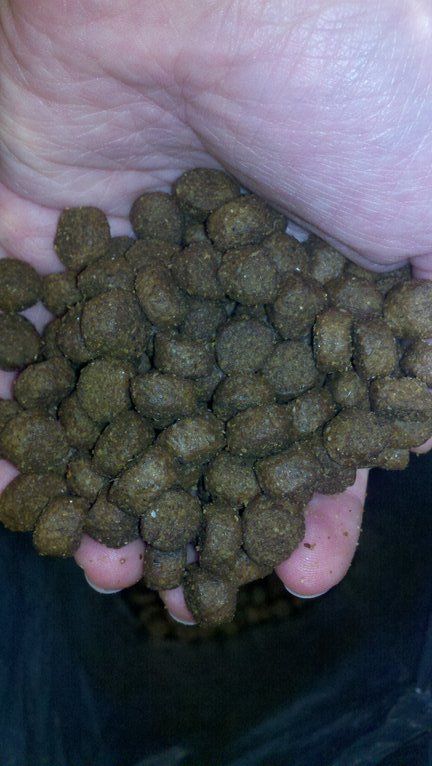 |
| The kibble |
Items in italics will be discussed later.
Bag's recommended daily feeding for an active dog 70 lbs: 3 cups, 90 lbs: 3 1/4 cups
Crude Protein: minimum of 34.0%
Crude Fat: minimum of 16.0%
Crude Fiber: maximum of 4.0%
Moisture: maximum of 10.0%
Calorie content: 470 kcal/cup, 4,160 kcal/kg
Calculated amount to maintain Ebon's ideal weight (82.5 lbs): 3.55 cups or 0.40 kg (0.88 lbs)
Price per pound when buying the largest bag: Unable to do calculations as all sellers I could find were out of stock
Estimated cost of feeding Ebon per year on this food: Unable to calculate for same reasons
Ebon receives slightly less than the calculated feeding amount to allow for his daily treats
Ebon's overall health on this food: Very good. Shiny coat, poop consistent and compact, energy level moderate to high
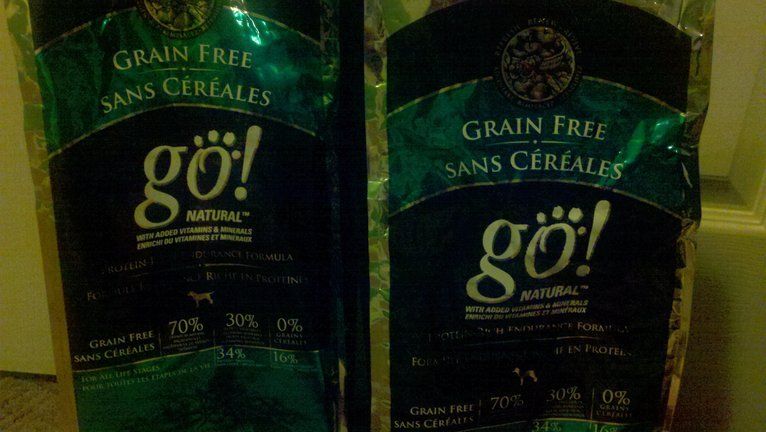 |
| The bags (each is six pounds) |
Ebon did great in this food, especially after he got over the stress caused by Siggy's morning "I need to potty and eat" whining barks. He was pretty typical Ebon, happy and rather energetic. His coat was fine, especially after I gave him a much-needed bath. He's wonderfully soft right now, with his fur being beautifully shiny and soft and silky to the touch. He did experience some stress while on this food, and did indeed do his normal stress poops. They were less lose than on other foods, but it still happened, which seems to be how he is on any food with a protein content over thirty. He did develop some tartar while on this food, but it's on the side with his missing tooth, which he doesn't like use to chew his duck feet or other treats that will help keep his teeth clean. So, that just means I need to brush them more often.
I also love that the label is in seven languages, but it also made it very hard to read!
It's a bit of a shame that the formula is being discontinued, partly due to the fact that the new version includes some ingredients I am unsure about after Ebon's unfortunate reaction to one of the foods in my trials. At this point, I rather doubt I'll try the new formula due to this fact. And Ebon did so well on the old stuff, too
Ebon's still a little chunky, but has lost at least a pound or two since Siggy left and I put him on a minor diet. I like him lean because it's better for his joints, so I want him back to the way he was before he started stealing food from the other animals. I don't weigh him regularly, but do the "look and feel" weight assessment regularly. When he's at the weight the veterinarian wants me ti keep him at (the 82.5 pounds mentioned above) you can faintly see a rib or two, and right now they're padded with fat. If it would stop raining so heavily I will also be increasing his exercise.
Will I change foods? We'll see. Next up: California Natural.
Wednesday, August 15, 2012
Cats don't Prefer Sweets
 |
| Cats taste the world very differently than humans |
The gene that we looked at was one of the two that go into making the receptors on your tongue that register sweetness. Specifically, the TAS1R2 (taste receptor, type 1, member 2) gene. TAS1R2 must join up with a second protein to signal that sweet flavor. Here is the TAS1R2 gene (specifically, my copy) in its three hundred fifty-five nucleotide entirety:
GCTGCGTACCACACCCAGCGCCGACCACCACATCGAGGCCATGGTGCAGCTGATGCTGCACTTCCGCTGGAACTGGATCATTGTGCTGGTGAGCAGCGACACCTATGGCCGCGACAATGGCCAGCTGCTTGGCGAGCGCGTGGCCCGGCGCGACATCTGCATCGCCTTCCAGGAGACGCTGCCCACACTGCAGCCCAACCAGAACATGACGTCAGAGGAGCGCCAGCGCCTGGTGACCATTGTGGACAAGCTGCAGCAGAGCACAGCGCGCGTCGTGGTCGTGTTCTCGCCCGACCTGACCCTGTACCACTTCTTCAATGAGGTGCTGCGCCAGAACTTCACTGGCGCCGTGTGG...not really that interesting.
This is your average TAS1R2 gene for Homo sapiens, nothing special. Just about every human out there has this exact sequence, with few exceptions (one of my classmates, for example, had a single point mutation). However, it is one gene crucial to why humans like sweets so much. This is what the gene looks like after it's been translated into its protein form (the letters are standard for amino acids):
Query 2 LRTTPSADHHIEAMVQLMLHFRWNWIIVLVSSDTYGRDNGQLLGERVARRDICIAFQETL 181
LRTTPSADHHIEAMVQLMLHFRWNWIIVLVSSDTYGRDNGQLLGERVARRDICIAFQETL
Sbjct 82 LRTTPSADHHIEAMVQLMLHFRWNWIIVLVSSDTYGRDNGQLLGERVARRDICIAFQETL 141
Query 182 PTLQPNQNMTSEERQRLVTIVDKLQQSTARVVVVFSPDLTLYHFFNEVLRQNFTGAVW 355
PTLQPNQNMTSEERQRLVTIVDKLQQSTARVVVVFSPDLTLYHFFNEVLRQNFTGAVW
Sbjct 142 PTLQPNQNMTSEERQRLVTIVDKLQQSTARVVVVFSPDLTLYHFFNEVLRQNFTGAVW 199
This is a comparison showing my own protein versus the average human. It's a perfect match and codes for a fully functional receptor protein. This gene is seen in a very wide variety of different animals, and the shared genetic material is quite astounding, allowing for countless species to have the ability to taste sweetness.  |
| A cat enjoying a fresh fish |
So, why am I talking about humans a post about cats? Well, let's compare the sequence above to the equivalent gene in a cat. The "query"line is the human gene again, and the "sbjct" or subject line is the equivalent gene in Felis silvestris catus.
Query 2 LRTTPSADHHIEAMVQLMLHFRWNWIIVLVSSDTYGRDNGQLLGERVARRDICIAFQETL 181
LRT P+ +H AM ++ +FRWNW+ + + D YGR + E RDICI F E +
Sbjct 184 LRTIPNDEHQATAMADIIEYFRWNWVGTIAADDDYGRPGIEKFREEAEERDICIDFSELI 243
Query 182 PTLQPNQNMTSEERQRLVTIVDKLQQSTARVVVVFSPDLTLYHFFNEVLRQNFTGAVW 355
+Q EE Q++V ++ Q STA+V+VVFS L E++R+N TG +W
Sbjct 244 -----SQYSDEEEIQQVVEVI---QNSTAKVIVVFSSGPDLEPLIKEIVRRNITGRIW 293
 |
| Cat tongue anatomy |
Though cats aren't able to taste sweetness, this doesn't mean they will avoid it. They are, in fact, completely indifferent to the flavor. So, if your kitty likes something sweet, it's probably going after something other than the sugar. They're quite fond of certain amino acids, so it's possible that's what your kitty enjoys.
Sources Basic Local Alignment Search Tool (BLAST), PLOS Genetics, Journal of Nutrition, and GeneCards. Images are from Wikimedia Commons under Creative Commons licenses: one, two, three.
By the way, BLAST is an amazing tool. Feel free to plug in the ATCG sequence above into their databases to compare the gene for yourself. The programs I used for this post are nucleotide blast and blastx.
Tuesday, August 14, 2012
Good to be Back!
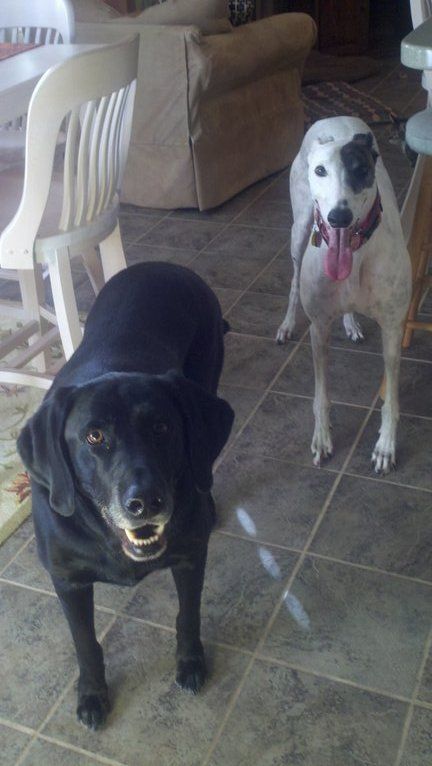 |
| The boys after a little time running around in the heat. |
What happened while I was gone? Not too much, really. My parents came home, so Siggy left about a week or so ago. I went bowling, did some cleaning, did some shopping for pet things. Taught Ebon a new trick. Broke a terrarium. Cooked and ate some good food. Learned the downsides of having a dog in the front seat of my car (may tell a story about that later). Now for some pictures from the past two weeks, some more interesting than others.
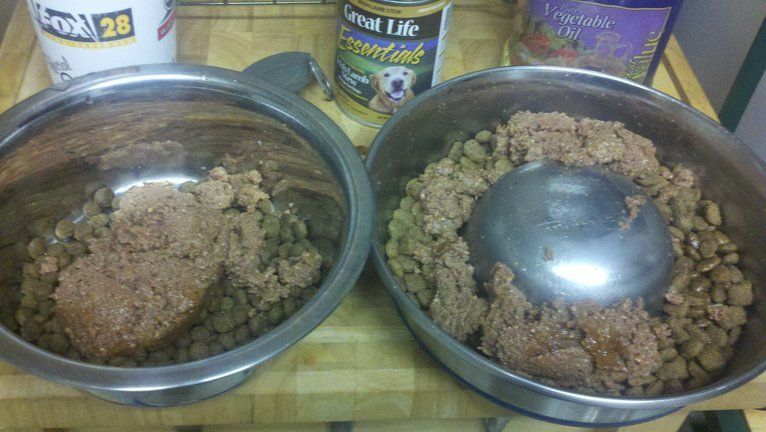 |
| Splitting some canned food (Great Life Essentials Irish Lamb Stew) between the boys. Good stuff! Ebon's kibble is Go! Natural Grain Free Endurance (formula is being discontinued, review to come). Siggy's kibble is Iams Healthy Naturals Chicken (average quality food, but fits Siggy's need for lower protein content, may review later). |
 |
| Siggy is his muzzle during a pedicure. He's paw shy, but a combination of the muzzle and lots of treats made it easy |
 |
| This guy is too cute |
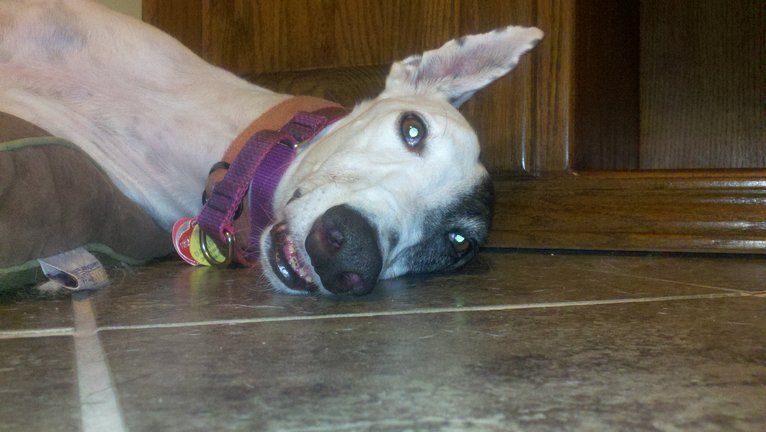 |
| And I'll miss his derp face |
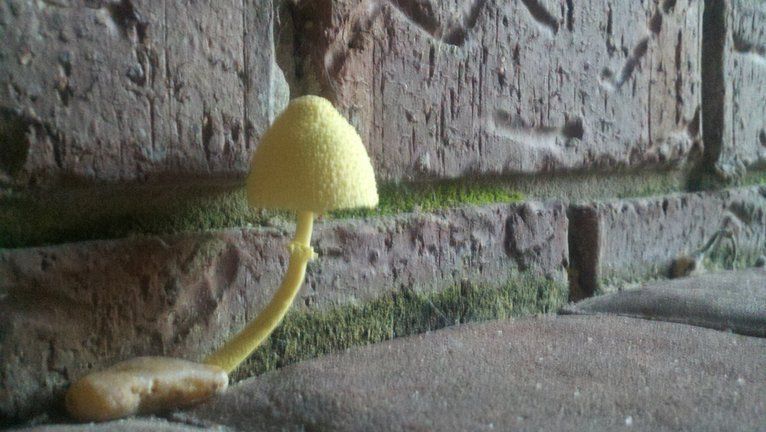 |
| It's been raining a ton, so some beautiful mushrooms are popping up! |
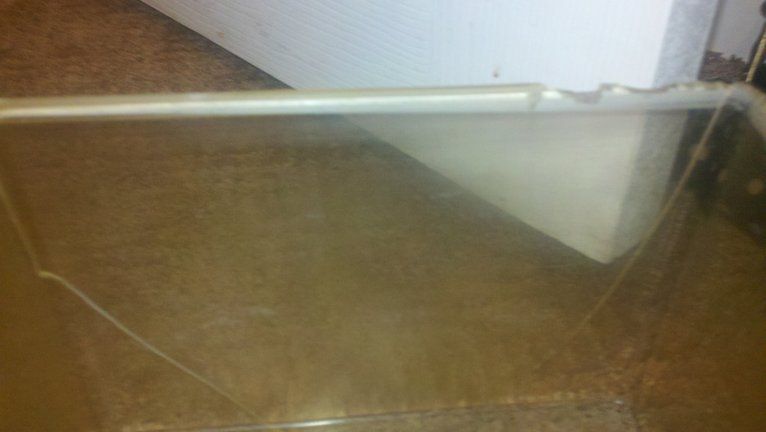 |
| The broken terrarium. I've been keeping them up high since I lost the roaches. Had to move things and they fell. The big one was fine, but the small one shattered! |
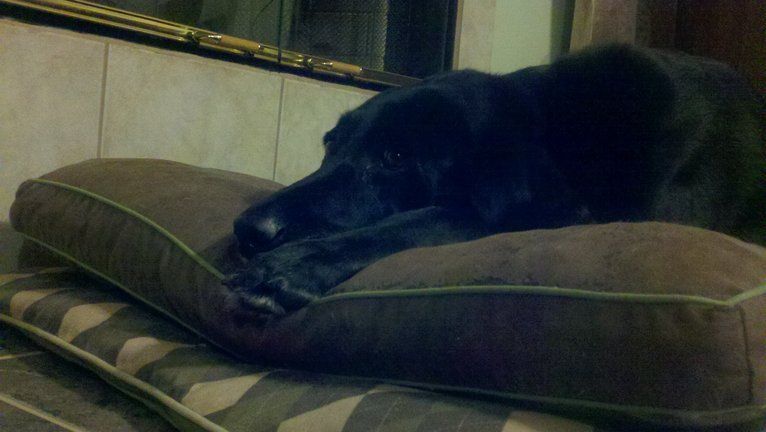 |
| Ebon missing Siggy. He's over it now, lol. |
Wednesday, August 1, 2012
Taking Two Weeks Off
I need a break.
I still wish to maintain this blog as very much not being about me, but about dogs and science and things of that sort. In some ways the blog has become more of a chore than it was in the beginning, which is what I never wanted it to become. This is mainly due to reasons that I wish not to discuss here. So, I won't be discussing why I need this break so badly, but mainly it's a need to step back and sort a number of things out, including managing my stress levels.
So, dear readers, I will be back. Until then, I wish you a good August.
I still wish to maintain this blog as very much not being about me, but about dogs and science and things of that sort. In some ways the blog has become more of a chore than it was in the beginning, which is what I never wanted it to become. This is mainly due to reasons that I wish not to discuss here. So, I won't be discussing why I need this break so badly, but mainly it's a need to step back and sort a number of things out, including managing my stress levels.
So, dear readers, I will be back. Until then, I wish you a good August.
Subscribe to:
Posts (Atom)

